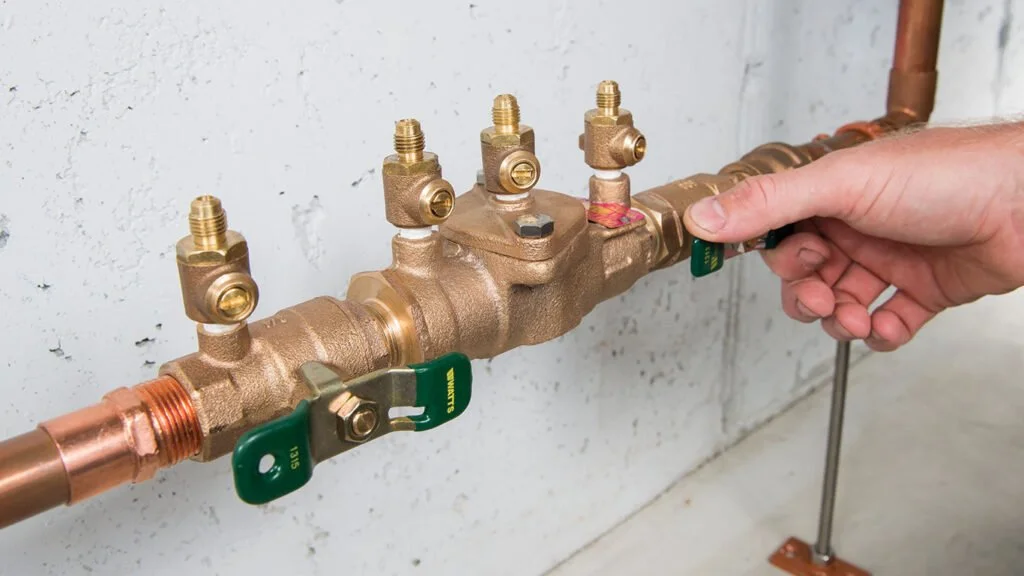OUR SERVICES
At Coastal Backflow Testing and Repair, our mission is to protect water quality with expert backflow prevention testing, maintenance, and repair for residential, commercial, industrial, and new construction projects. Our certified Red Seal plumbers deliver code-compliant, reliable service with fair pricing and a strong focus on clear, honest communication—ensuring every client feels informed, supported, and confident in the work we do.
BACKFLOW TESTING
Most municipalities require that all backflow prevention devices be tested annually to ensure they’re working properly and protecting the public water supply from contamination. At Coastal Backflow Testing & Repair, we stay up to date with local regulations to make sure your system is fully compliant and your water stays safe. Whether your’'e a homeowner, business, industrial operator, or managing a new construction project, our certified Red Seal plumbers provide fast, accurate, and fully documented testing to meet your municipality’s requirements.
01
BACKFLOW DEVICE REPAIRS
When a backflow prevention device fails, timely and proper repair is essential to maintain water safety and compliance with local regulations. Our certified Red Seal plumbers specialize in diagnosing and repairing all types of backflow assemblies. We use quality parts, follow strict industry standards, and ensure every repair is tested and documented to meet municipal code requirements. Whether it’s a minor issue or a full rebuild, we provide efficient, reliable service you can count on.
02
BACKFLOW DEVICE REPLACEMENT
When a backflow prevention device is beyond repair or no longer meets current code requirements, replacement is the safest and most effective solution. At Coastal Backflow Testing & Repair, we offer expert backflow device replacement services for residential, commercial, industrial, and new construction properties. Our certified Red Seal plumbers ensure proper selection, installation, and testing of your new device to guarantee full compliance with municipal regulations. We handle the entire process efficiently and with clear communication, minimizing downtime and ensuring your water system stays protected.
03
FAQs
-
Backflow testing is a required annual procedure that helps protect public drinking water and safeguard public health. It ensures that contaminants potentially capable of reversing into the public water supply remain contained within a property's internal plumbing system.
Mechanical backflow prevention assemblies rely on components such as seals, springs, and moving parts, which can degrade over time due to wear, fouling, or fatigue. These devices—and even air gaps—can be bypassed or fail. For this reason, all backflow prevention assemblies must be tested regularly using properly calibrated gauge equipment to confirm they are operating correctly.
-
A backflow preventer is a device installed in plumbing systems to stop contaminated water from flowing backward into the clean, potable (drinkable) water supply.
How does it work? A backflow preventer uses mechanical components—like check valves, air gaps, or pressure zones—to block water from flowing in the wrong direction. These components detect pressure changes and automatically shut to prevent reverse flow.
-
Normally, water flows in one direction—from the public water supply into homes or businesses. But if there’s a sudden drop in water pressure (due to a broken main or high demand, for example), water can reverse direction—a phenomenon called backflow. This can pull contaminated water (like from irrigation systems, industrial processes, or even garden hoses submerged in dirty water) back into the public supply.
-
Backflow prevention assemblies must be tested and certified upon installation and at least once a year by a licensed backflow tester. However, many people may not have had theirs tested due to a lack of awareness, recent changes in local regulations, or because their property wasn't previously considered high risk.
It's the responsibility of the homeowner, business owner, property manager, or person in charge of the building to ensure these devices are tested and maintained annually to protect the public water supply.
Want to learn more?
Reach out today.




